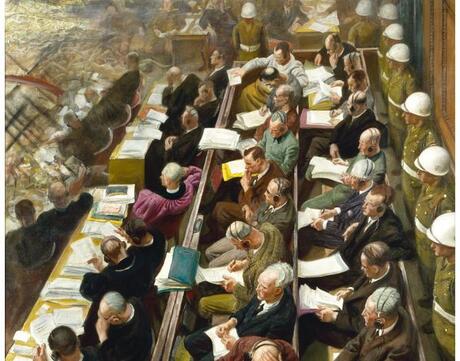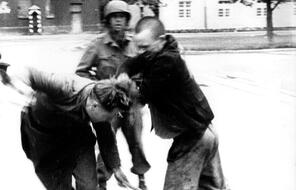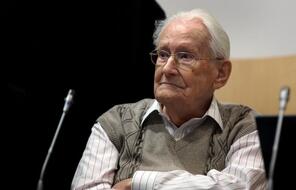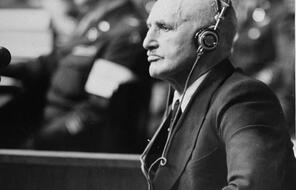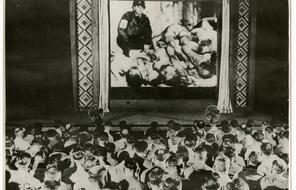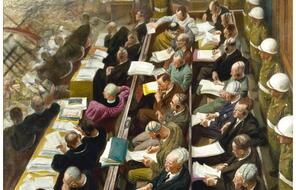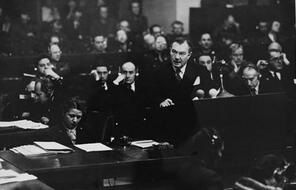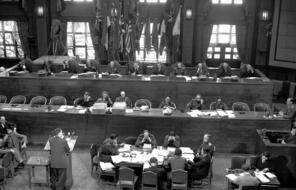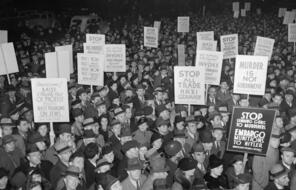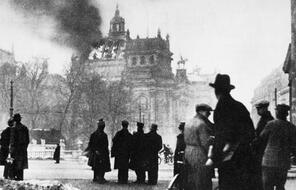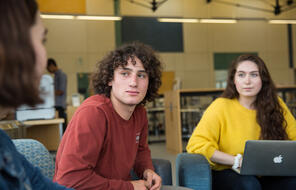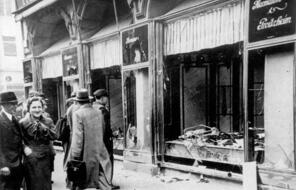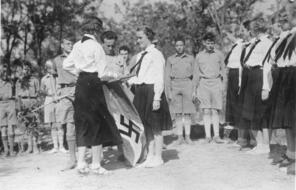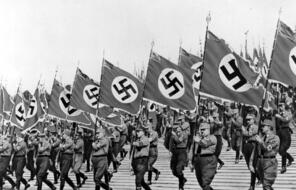What kind of justice is possible after mass murder on a scale never seen before? Legal scholar Martha Minow writes that seeking justice for war and mass atrocities like the Holocaust requires balance between two opposite responses: vengeance and forgiveness. Vengeance, in response to war and genocide, means revenge or retaliation against those who instigated the war and committed atrocities; it is usually carried out by the victims themselves, and it can perpetuate a cycle of violence. Forgiveness has the power to break the cycle of violence, but it often leaves the perpetrators unpunished and it may often be too much to ask of the victims of heinous crimes.
This chapter begins with an exploration of the impulse for revenge and ends with a reflection on whether forgiveness was or is possible after the Holocaust.
A spectrum of justice lies between the two poles of vengeance and forgiveness. Trials, like those held by the Allies in Nuremberg after the war, occupy one place on that spectrum. At a trial, a court with established rules and procedures is given the responsibility of responding to a crime, rather than the victims themselves. Evidence is presented to prove or disprove that defendants committed the crimes of which they are accused, and they have an opportunity to defend themselves. Perpetrators are punished, but only after their guilt has been proven. Minow writes, “Resisting revenge and the continuation of war, the [Nuremberg] tribunal turned to principle, fact-finding, and public debate.”
Yet the Allies’ decision to establish a tribunal, or court, to prosecute the leaders of Nazi Germany led to additional dilemmas: Who, exactly, should be brought to trial? What crimes, specifically, should the defendants be charged with? Can defendants be held responsible for breaking international laws that did not yet exist when they broke them? After a war, can the victorious nations be trusted to conduct fair trials of the leaders of the nations they fought against and defeated?
The readings in this chapter show how the Allies, through the Nuremberg trials, responded to these dilemmas as they sought justice for World War II and the Holocaust. By 1949, more than 200 German officials, including the highest-ranking surviving Nazi leaders, members of the Einsatzgruppen mobile killing units, and dozens of physicians and industrialists, were brought to trial for their roles in the war and in the mass murder of civilians. The vast majority were convicted and sentenced to death or prison sentences of varying lengths.
The trials and the judgments that were reached after the war in courtrooms in Nuremberg, as well as in Tokyo and other cities, gave life to long-standing international laws and inspired new ones over time. Each of the trials was intended to give expression to the horror of the crimes and the pain of the victims. The trial proceedings were made public so that people could not only learn but also judge for themselves what had happened and whether justice was done. The evidence was recorded, and every judgment included the reasoning it was based on, so that the truth could be established and tested and retested over time.
US Supreme Court Justice Stephen Breyer has observed that when we learn about the Holocaust, “We think: There are no words. There is no compensating deed. There can be no vengeance. Nor is any happy ending possible.” But Nuremberg “reminds us of those human aspirations that remain a cause for optimism. It reminds us that after the barbarism came a call for reasoned justice.”
Studying this call and evaluating its successes and its difficulties allows us to reflect more deeply on the complexity of human behavior, the possibility of judging today the choices made by people in past generations, and the existence of universal standards of right and wrong.
